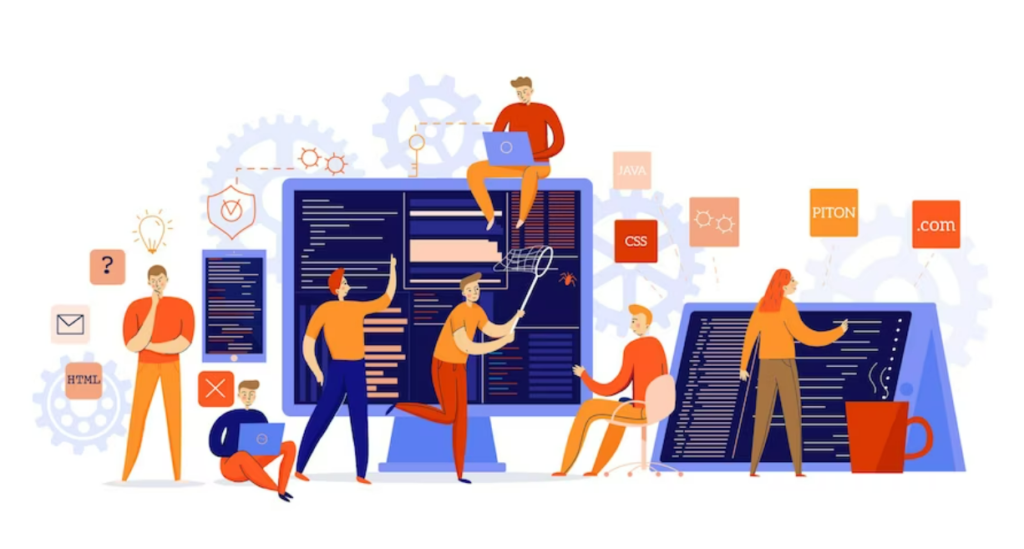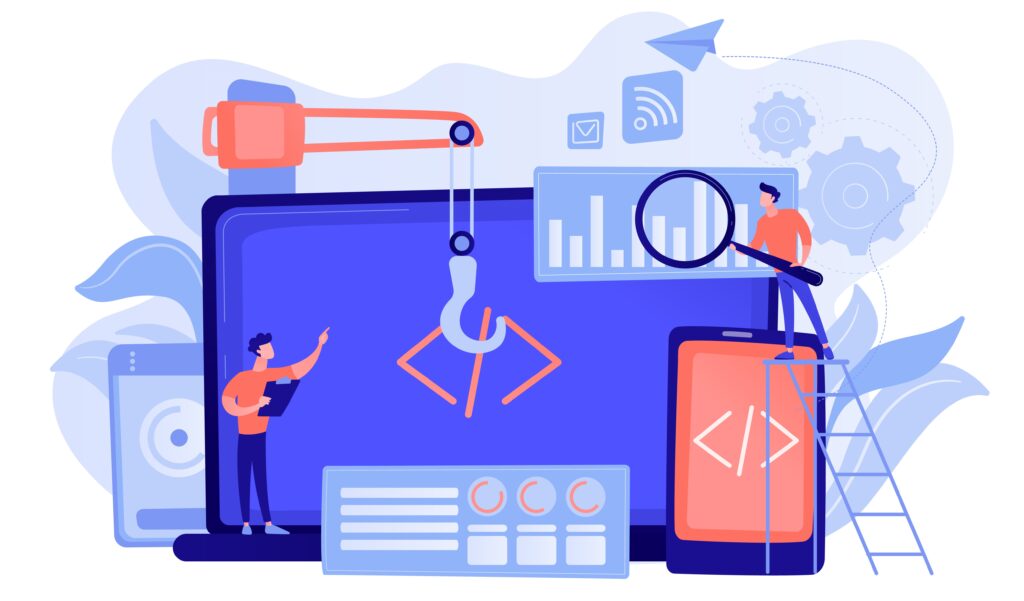No idea about the upcoming business software development trends? Here you go!!!
The COVID-19 pandemic has had a significant impact on businesses worldwide, acting as a turning point for many companies. Small and large enterprises were compelled to quickly reorganize their working processes and accelerate their IT priorities and technology roadmaps. As a result, businesses have recognized the need to embrace digital transformation to stay competitive in the long term. Get to know what’s far more important to know as a software buyer to understand the whole fact in a better way.
Introduction to Software Development Industry
According to research conducted by Accelerated Strategies Group, 63.3% of business respondents have prioritized digital transformation, focusing on contactless services, cloud migration, and DevOps activities. This trend highlights the importance of businesses embracing digitalization to adapt to the new normal.
Despite the software development industry being in a better position than other sectors during the pandemic, it still faced spending cutbacks, delayed projects, and staffing reductions. However, the IT sector is now recovering and is projected to exceed its pre-pandemic position by 2024, with an estimated 5% compound annual growth rate (CAGR).
Global IT spending declined by 5.4% in 2020 due to the pandemic’s volatility. However, the industry has begun to rebound, with total projected spending of $3.8 trillion. This year, software developments have been leveraged to help society with building apps with zero IT experience, monitoring patients in hospitals, and tracking social distancing in the workplace.
Top 5 Software Development Trends to Watch For Coming Years

The COVID-19 pandemic has underscored the critical role of software solutions in determining the way of life in a primarily digital world. With businesses accelerating digital transformation initiatives, the software development industry is poised for significant growth and innovation in the future.
The evolution of software development has significantly impacted various aspects of our daily lives. This year, software development solutions have been increasingly used to facilitate tasks such as app creation with no IT experience, hospital patient monitoring, and workplace social distancing tracking. As businesses continue to realize the benefits of software solutions in enhancing operational efficiency and service delivery, it is important to explore where software and technology will take us in the future.
Businesses Choose No-Code Platform and Development
Businesses are increasingly turning to low-code and no-code development solutions to overcome the common issues and expenses associated with traditional software development. About 20% of all software projects fail and 52% are deemed challenging, adding to the significant costs involved. Low-code/no-code development is a simplified approach that does not require advanced IT knowledge or coding skills, leading to faster and easier development.
Low-code platforms require some technical knowledge but offer shortcuts that help developers work more efficiently. Meanwhile, no-code platforms enable users to drag-and-drop blocks of pre-made code in a visual interface. According to KPMG, enterprises that implemented low-code platforms have seen a positive ROI, with the number of business executives listing this development approach as their most important automation investment nearly tripling since the pandemic began.
Forrester predicts that 75% of all app development will utilize low-code and no-code platforms in 2021, a 31% increase from 2019. Gartner also reports that over 50% of medium to large enterprises will adopt a low-code application platform by the end of 2023.
Visual development tools like Bubble and Adalo are popular examples of low-code and no-code platforms. Bubble is a no-code tool for creating web apps, while Adalo is a low-code platform. In its first round of venture capital funding, Bubble raised $6.25 million, while Adalo announced an $8 million series A round.
Facilitating Collaboration through Cloud Computing
In recent times, there has been a noticeable trend among software development companies to adopt cloud-native solutions for app development, team management, and communication. These cloud-based solutions are software products and services that can be hosted on public, private, or hybrid clouds. One of the major advantages of such solutions is their infrastructure-agnostic nature, which allows them to run on multiple servers and makes them accessible to any company.
Cloud-native software solutions, based on containers and microservices, provide software development teams with flexibility, scalability, and improved productivity. In addition, the demand for cloud services and tools has grown significantly due to the need to facilitate remote work. With the implementation of appropriate infrastructure, companies have been able to support employees in creating a productive work environment in their home offices.
Machine Learning Operations are Revolutionizing Software Development
As companies increasingly turn to artificial intelligence (AI) and data science to drive innovation and competitiveness, machine learning (ML) is becoming a vital tool in the software development toolkit. ML is now being used at all stages of the software development lifecycle, from prototyping and testing to programming and operations. It is helping inform decisions and priorities, improve accuracy, and increase productivity.
One of the most promising ML methods gaining traction in 2023 is Generative AI. This technology allows for the creation of new content by using existing content such as files, text, audio, and images. Generative AI is transforming software development, targeted marketing, and even pharmaceutical development. It is predicted that Generative AI will account for 10% of all data produced within the next three years.
In software development, Generative AI has the potential to automate some of the more repetitive and routine tasks, enabling programmers to focus on higher-level coding requirements. This approach, often referred to as “augmented programming,” promises to enhance productivity and reduce costs by eliminating much of the manual work involved in programming.
Microservices Gain Global Recognition in Modern Software Architecture
As Cloud and container development continue to evolve, more and more developers are embracing microservices as a leading form of architecture. The limitations of the traditional monolith architecture, where new features are added to a single, large service as the project grows, have long been recognized as a scalability challenge. However, it is only now, with the advancements in Cloud computing, that microservices are poised to reach new heights.
The idea behind microservices is to break down the functionality of the software into manageable, modular sections. Each microservice performs a single function with exceptional efficiency. This enables developers to update a specific function or make changes in one microservice without affecting the overall system, leading to faster deployment and easier maintenance. Hence, these microservices are the top software development trends in the coming years.
The Impact of IoT Solutions on the Future of Software Development
The Internet of Things (IoT) has brought a plethora of unexpected opportunities in our daily lives and businesses. The IoT has changed the way we interact with technology, resulting in advancements in both hardware and software development. High-quality software programs have become crucial for numerous organizations.
As digitization continues to accelerate, an increasing number of businesses are adopting IoT-based solutions. One major concern that IoT addresses is security. If an unauthorized individual or group breaches a business’s security and gains access to its data and control, the consequences can be severe.
With the use of various IoT technologies, aspects such as security, integration, and scalability can be created, developed, and implemented. Therefore, IoT-based solutions are poised to dominate the world with their competitive advantages in various types of operations.
Closing Thoughts
The emerging trends in enterprise software development and custom enterprise software can pave the way for success in business. However, it is crucial to adopt a strategic approach while implementing these trends. To ensure a smooth and effective implementation, it is recommended to partner with an experienced enterprise software development company. Also knowing the factors to consider while choosing the right business software for your business is vital.





